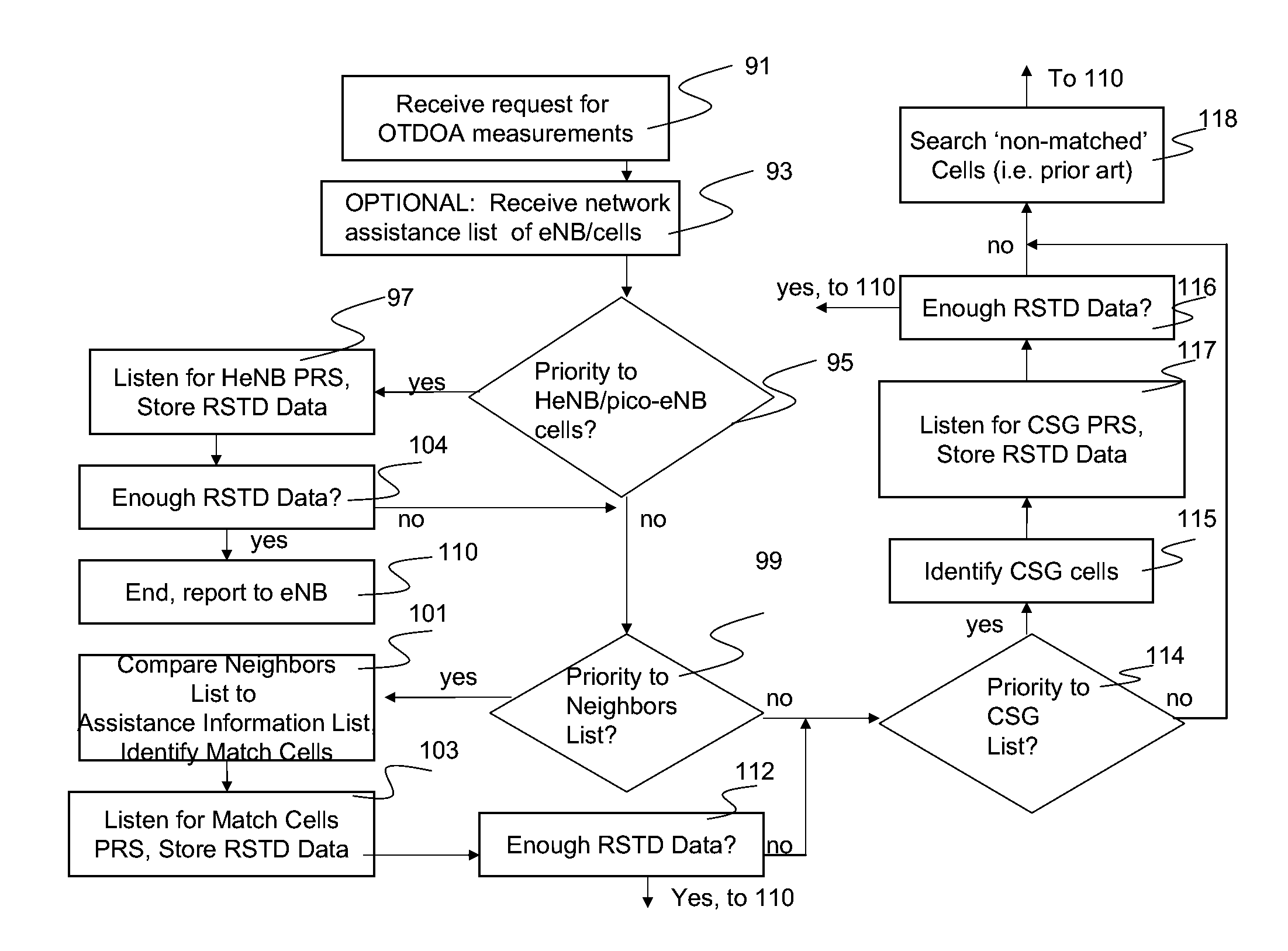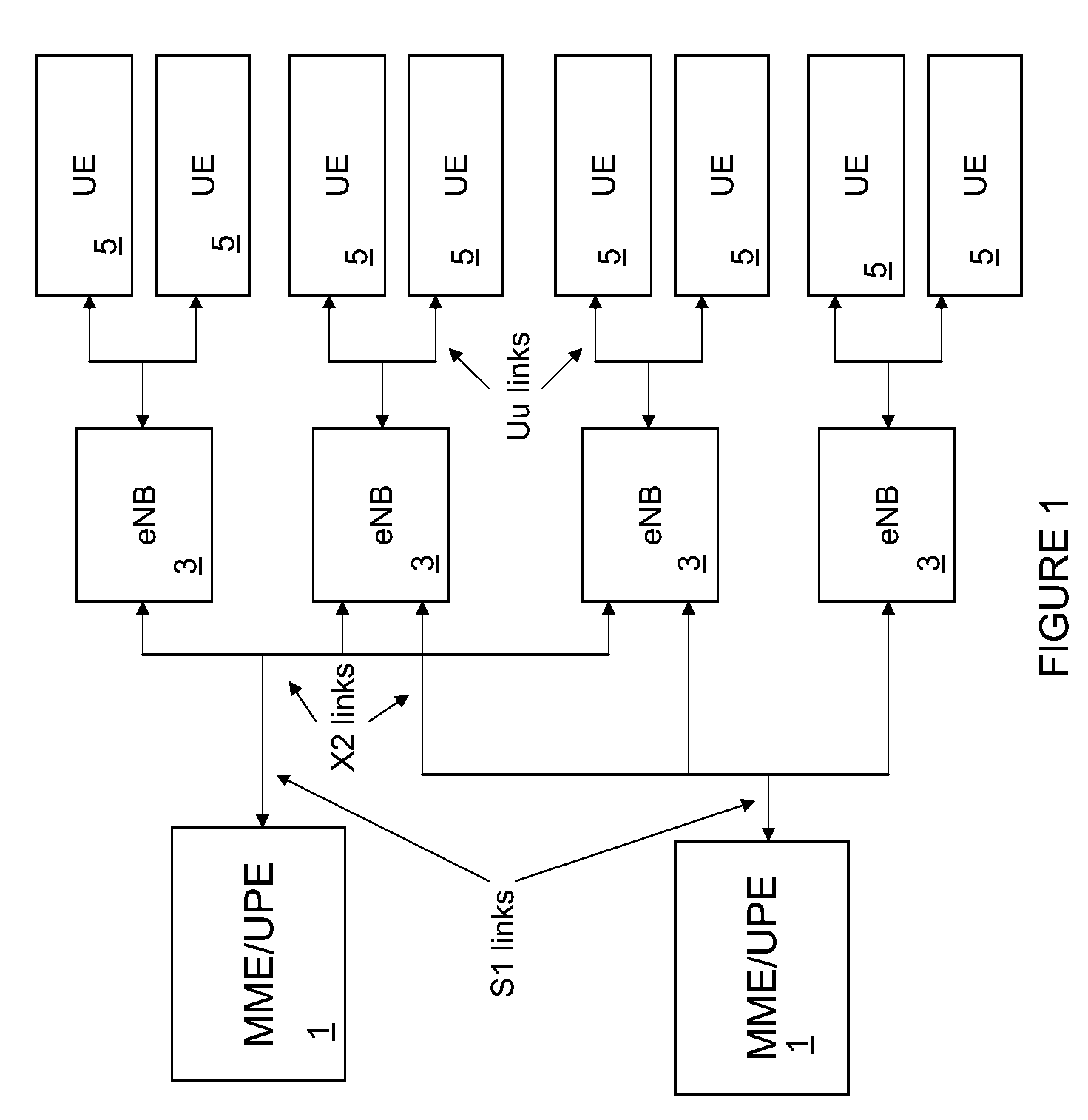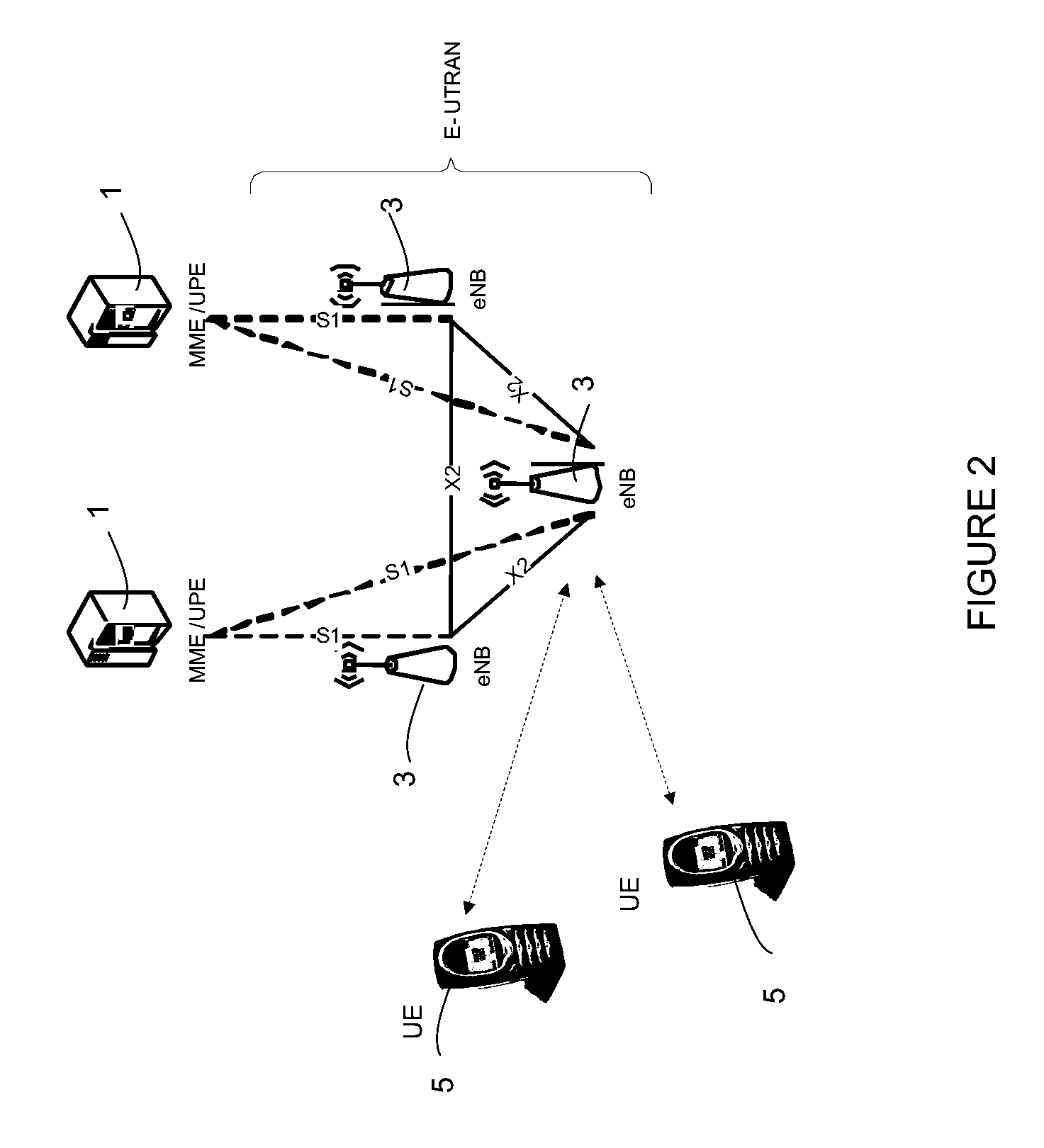System and Methods for Observed Time Difference of Arrival Measurements for Location Services in Cellular Devices
a technology of location services and measurement methods, applied in the field of system and method of observed time difference of arrival measurement for location services in cellular devices, can solve the problems of system not meeting the requirements using the approaches of the prior, and the user equipment consumes substantial power, so as to reduce the time needed, the signal to noise ratio is sufficient, and the effect of reliable measuremen
- Summary
- Abstract
- Description
- Claims
- Application Information
AI Technical Summary
Benefits of technology
Problems solved by technology
Method used
Image
Examples
Embodiment Construction
[0027]Referring initially to FIG. 1, illustrated is a system level diagram of a radio frequency interface communication system including a wireless or air interface (AI) communication system that provides an environment for the application of the principles of the present invention. The wireless communication system may be configured to provide features included in the E-UTRAN services. Mobile management entities (“MMEs”) 1 and user plane entities (“UPEs”) provide control functionality for one or more E-UTRAN node Bs 3 (alternatively referred to as base stations) via an S1 interface or communication link. The base stations 3 communicate via an X2 interface or communication link. The various communication links are typically fiber, microwave, or other high-frequency metallic communication paths such as coaxial links, or combinations thereof.
[0028]The base stations 3 communicate over the AI with user equipment 5 (designated “UE”), each of which is typically a mobile transceiver carrie...
PUM
 Login to View More
Login to View More Abstract
Description
Claims
Application Information
 Login to View More
Login to View More - R&D
- Intellectual Property
- Life Sciences
- Materials
- Tech Scout
- Unparalleled Data Quality
- Higher Quality Content
- 60% Fewer Hallucinations
Browse by: Latest US Patents, China's latest patents, Technical Efficacy Thesaurus, Application Domain, Technology Topic, Popular Technical Reports.
© 2025 PatSnap. All rights reserved.Legal|Privacy policy|Modern Slavery Act Transparency Statement|Sitemap|About US| Contact US: help@patsnap.com



